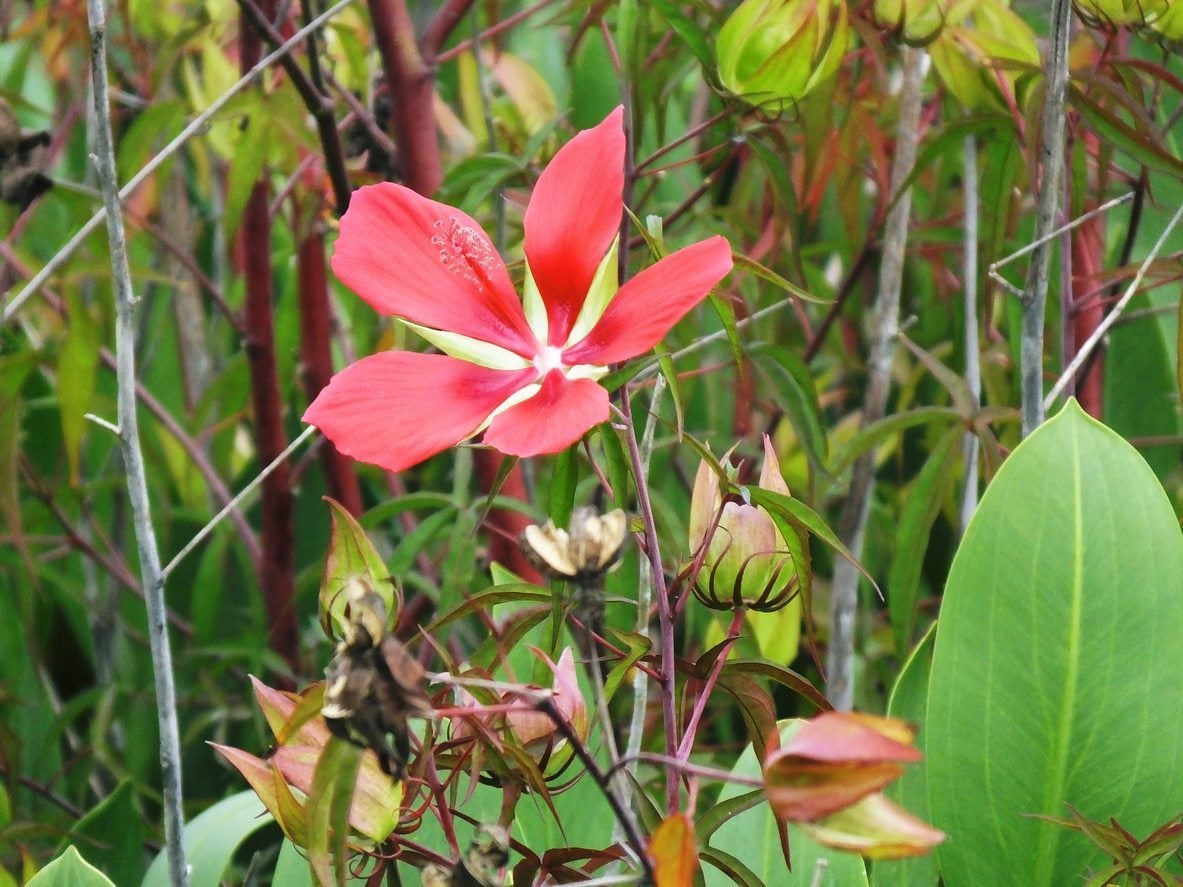Texas Star Hibiscus Info: Tips For Growing A Texas Star Hibiscus


The Texas Star hibiscus is a moisture loving variety of hibiscus that produces large, striking, star-shaped flowers in both white and bright crimson. Keep reading to learn more about Texas Star hibiscus care and how to grow Texas Star hibiscus plants in the garden and landscape.
Texas Star Hibiscus Info
There are at least 200 distinct species of hibiscus in the world, which means there should be one for every gardening need. So, what is a Texas Star hibiscus and what sets it apart? The Texas Star species (Hibiscus coccineus) is native to the southern United States and pacific coast. It is hardy in USDA zones 8 to 11, though it will die back to the ground and regrow in the spring in colder areas, sometimes as cold as zone 5. It goes by several names including swamp hibiscus, scarlet rose mallow, and red hibiscus. It is best identified by its flowers, which are sometimes white but often deep, bright red. The flowers have five long, narrow petals that form an unmistakable star shape. These flowers can reach 6 inches (15 cm.) in diameter. The plant usually reaches 6 to 8 feet in height (2 m.) but can grow as tall as 10 feet (3 m.). Its leaves are long, and star shaped, and it often gets mistaken for marijuana.
How to Grow Texas Star Hibiscus Plants in the Garden
Texas Star hibiscus care is easy, as long as you meet the plant’s growing requirements. It is native to swamplands, and it does best in damp areas, such as the borders of ponds or low spots in the garden. That being said, it will tolerate some dryness, and growing a Texas Star hibiscus in a traditional garden bed is fine, as long as it gets frequent watering. It performs best in full sun or partial shade. It attracts grasshoppers, which will chew on the leaves and flower buds. These are best removed (or squished) by hand.
Sign up for the Gardening Know How newsletter today and receive a free copy of our e-book "How to Grow Delicious Tomatoes".

The only child of a horticulturist and an English teacher, Liz Baessler was destined to become a gardening editor. She has been with Gardening Know how since 2015, and a Senior Editor since 2020. She holds a BA in English from Brandeis University and an MA in English from the University of Geneva, Switzerland. After years of gardening in containers and community garden plots, she finally has a backyard of her own, which she is systematically filling with vegetables and flowers.